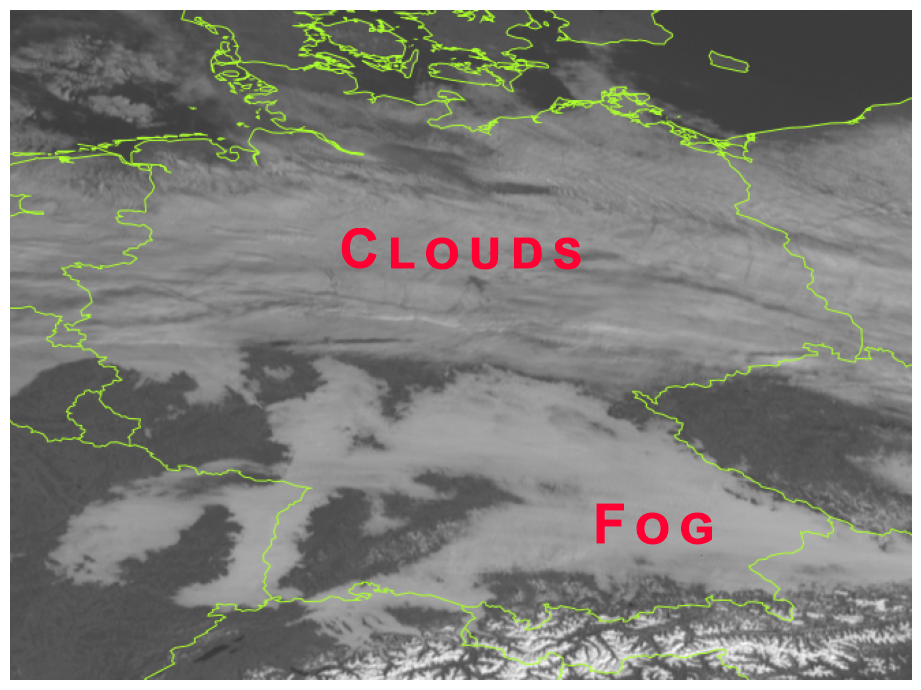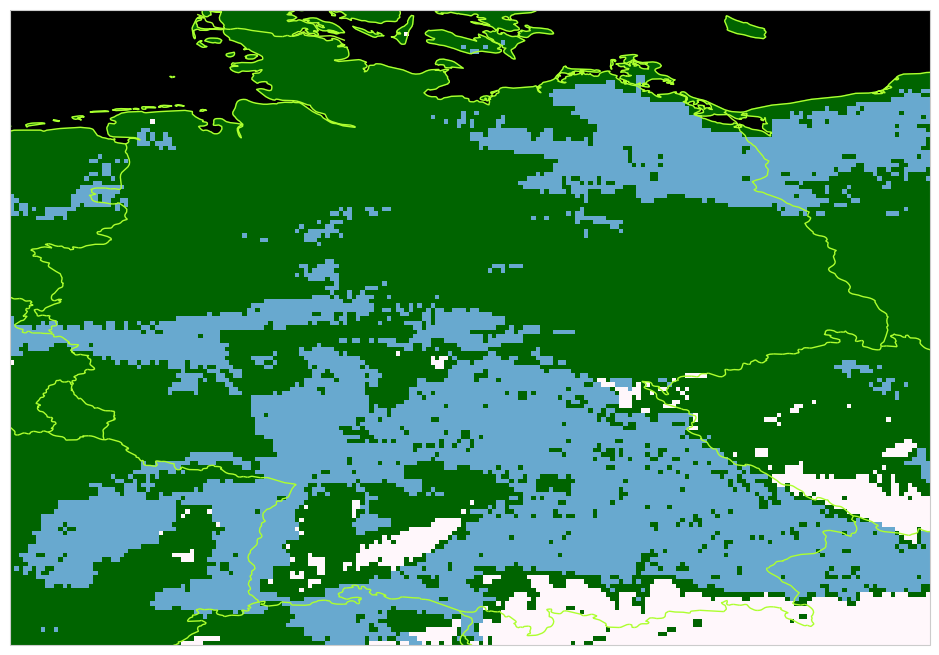| Duration: | 01/2021 - 03/2024 |
| Contracting Authority/ Sponsors: | Federal Ministry of Economic Affairs and Climate Action (BMWK) |
| Project Partners: | Joint projekt partner:
|
| Project Focus: |
SnowFogS – Detection and Prediction of Fog and Snow for PV Forecasts


In the »SnowFogS« project, improved methods for photovoltaic (PV) power prediction are being developed for two critical weather situations: Fog and snow. In both cases, large errors in upscaling and prediction of PV feed-in can occur. Methods from the field of machine learning have the potential to identify such situations in satellite imagery and thus significantly improve forecasts of the cloud situation. Within the project, new classification methods for fog and snow with higher accuracy and broader applicability compared to established methods have been developed. In the further course, the dissipation of fog will be predicted and more accurate methods for the forecast of solar irradiance and PV power will be developed.
For grid integration and marketing of increasing amounts of energy from PV systems, grid operators need reliable information about the PV feed-in in their control area. Forecasts for the following day and hours as well as projections of the current grid feed-in play a major role.
In many weather situations, regional forecasts of solar irradiance and PV power have high accuracy today. When fog occurs, however, they are associated with significantly greater uncertainties; the short-term forecast of the formation and dissipation of fog poses a particular challenge compared to the forecast of cloud movements. Snow can have very different effects on the yield of PV systems due to additional reflection on the one hand and strongly attenuated transmission of solar radiation on the other, and can also lead to large forecast errors.
The project »SnowFogS« therefore aims at improving PV predictions in critical situations caused by fog and snow. For this purpose, machine learning methods are applied to meteorological satellite imagery and models are trained for the identification of fog and snow as well as the temporal development. New methods have been developed for:
- The classification of fog and low stratus clouds in distinction to situations with high clouds and clear skies.
- The identification of snow-covered ground under clear skies (to distinguish from clouds).
These new techniques offer broader applicability and/or higher accuracy compared to existing approaches.
As the project progresses, the development of new and improvement existing methods in the following areas will be pursued:
- The prediction of fog formation and dissolution and integration into short-term irradiance forecasts based on cloud motion analysis.
- The use of the novel methods and data to improve PV feed-in forecasts in fog and snow situations and to provide uncertainty information.
In the project consortium, experts from the fields of meteorological satellite image analysis, artificial intelligence and machine learning, and PV power forecasting collaborate. Together with two German transmission system operators, new methods are being developed and tested in application.